When it comes to riding off road, your tires play a huge role in performance. Having the right tire can be the difference between ripping corners and sliding out. It’s all about finding the perfect combination of traction, weight and durability, so let’s get started!
Are you riding on dirt, sand, mud, or snow? Good, then this is the right category for you. If you’re riding on paved surfaces, make sure to check out our guide to road bike tires. The first question you need to ask yourself when selecting tires is where will I be riding? Deep dust, mud, lots of rocks, slippery roots, hard pack, gravel/ dirt road? The type of dirt and the conditions play a key role in the type of tire you’ll want to use. Next, you’ll want to consider your goal while riding. If you’re a recreational rider looking to have a good time and be safe, your tire choice may be different from an XC racer riding the same trail.
When you’re making tire selection decisions here are some of the things you want to think about:
First thing’s first, know your wheel size when you’re looking for new tires: 26, 27.5 or 29!
 This tread will reduce rolling resistance and is ideal for trails that are hard-packed and fast.
This tread will reduce rolling resistance and is ideal for trails that are hard-packed and fast.  Tubeless sealant also fills small punctures that would cause flats with traditional tires and tubes. Learn more about tubless systems HERE.
Tubeless sealant also fills small punctures that would cause flats with traditional tires and tubes. Learn more about tubless systems HERE. 
Remember, tread and compounds will vary widely from brand to brand. Don’t be afraid to ask questions at your local bike shop to ensure you are getting a tire which meets your needs. All tire decisions start with simple questions: Where am I riding? What are my goals? What am I willing to spend (and how often am I willing to replace my tires)?
How to Choose the Right Saddle
How to Store Multiple Bikes and Gear in Small Spaces
How to Adjust Your Suspension on the Trail
How to Adjust a Dropper Post
How to Set Up Mountain Bike Suspension
Get Your Printable Fix-a-Flat Zine
How to Fix a Flat Tire | Tubeless
How to Fix a Flat with a Tube
Top Five Bike Maintenance Tips
What to Pack for an Epic Mountain Bike Ride
How I Became a Professional Bike Mechanic
How to Use a Torque Wrench
How to Select Mountain Bike Tires
How to Select Road Bike Tires
How to Perform a Safety Check on Your Bike
The Importance of Proper Bike Fit
How to Prep Your Bike for Riding in the Rain
How to Replace Disc Brake Pads and Rotors
How to Cut MTB Handlebars
Trailside Bike Repair Fix Guide
How to Setup Tubeless Tires
How to Silence Common Bike Noises
How to Replace Handlebar Tape on a Road Bike
How to Pack and Ship a Bike
How to Wash a Bike
How to Adjust a Bike Derailleur
How to Repair a Broken Bike Chain
How to Make a Wall-Mounted Shelf to Hang your Bike
How to Make a Bike Hook out of Pipe Fittings
How to Carry a Yoga Mat on a Bike
Removing and Reinstalling a Bike Wheel for Transport
How to Navigate the Subway with a Bike
How to Lock your Bike in a City
Parts of the Bike
How to Fix Squeaky Disc Brakes
Bike Safety | Hand Signals and Riding Tips
Cycling at Night: How to Light Up Your Bike
If you’re new to cycling, you’d be forgiven if for assuming that all mountain bike tires are basically the same: They’re the knobby ones, right? Yes… But mountain bike tires can vary hugely in their size, materials, durability, and, depending on those knobs, the type of terrain and riding style they’re designed to handle.
A properly chosen mountain bike tire can make a ride more comfortable, safer, and give you more traction on the trail. It can shave grams off of your total bike weight, or it can make you less prone to flat tires. Tires are quite literally the base of the bike -its connection to the ground- so the tires you use make a big difference to your ride quality.
Here’s what you need to know to understand how MTB tires work, the differences in construction and type, and how to choose the best mountain bike tire for your bike and riding style…
Tires are generally marketed for four types of mountain bikes and styles of riding:
Cross-country / XC / Marathon: If you’re all about speed and climbing, and you’re a bit of a weight weenie or planning to race, cross-country mountain bike tires are for you. They’re thinner and lighter than the other options, and will roll faster. They generally have smaller, lower, and/or fewer knobs, and distinct front- and rear-specific tires are common.
While lighter means faster, the weight savings come at the expense of protection. XC tires have fewer layers of puncture and cut protection, so they may not be the best choice for gnarly trails, though burlier tires for cross country bikes are available. (We’ll explain all the layers and construction a little further down)
c. Bartek Wolinski for NS BikesTrail / All-Mountain / Enduro: For most people, this is what they mean when they say “Mountain Biking”. Moving up in travel, you have Trail bikes (120-140mm), All Mountain (140-170mm), and Enduro (160-180mm). The tires get bigger, tougher, and more aggressive as you move up that ladder, too.
Here, knobs are taller and start to get supporting trusses to hold up to higher speed, more aggressive cornering. Tire size and volume increase to offer more traction and support, and they add more protective layers to the casing. Some tires get dual rubber compounds to put more grip on the sides.
c. Ryan Finlay for CanyonDownhill / DH / Gravity: If you’ve ever been to a lift-served bike park, you know what downhill bikes look like.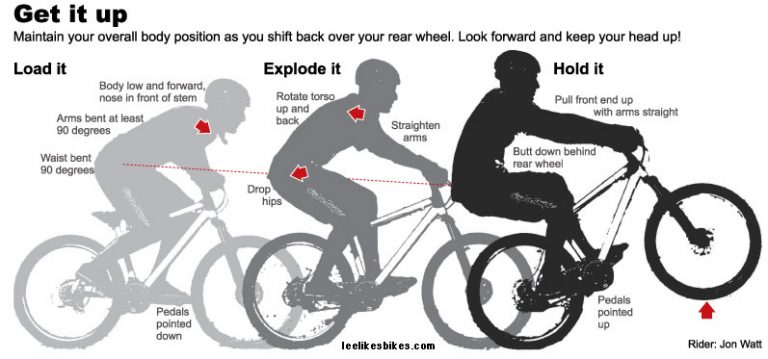 They’re burly, have massive suspension, and DH tires are built extra tough to withstand serious drops, huge obstacles, and hard hits.
They’re burly, have massive suspension, and DH tires are built extra tough to withstand serious drops, huge obstacles, and hard hits.
Plus / Fat Bikes: These bikes are designed for wider tire clearance. Fat bikes are typically ridden in snow (or occasionally sand, like on beaches) because their massive volume provides great flotation in soft surfaces.
“Plus” bikes sit between fat and trail-sized tires, and had a brief period of popularity with 2.8″ to 3.0″ tires because the added width boosted comfort and traction. But the category has mostly gone away, and most regular mountain bikes and suspension forks won’t fit tires this wide.
An MTB tire size is typically expressed as wheel diameter x tire width (like 29 x 2.4).
Generally, mountain bike tires come in three diameters – 26″, 27.5″ and 29″. There are also smaller ones for children’s bikes, ranging from 12 to 24 inches in diameter.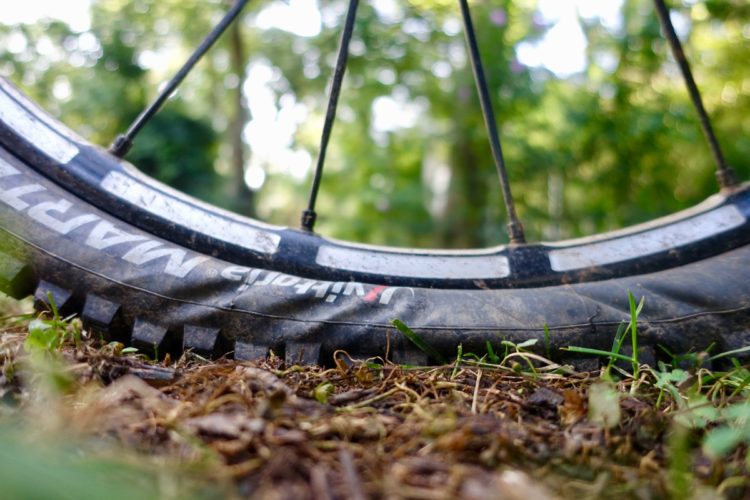
The second number is the width and can range from 1.9″ for ultralight race bikes (and kids’ bikes) to 5″ for fat bikes.
While the 26, 27.5 or 29-inch measurement is based on your wheel size, the tire width is determined in part by how much clearance you have between your fork or rear triangle and your tire, and by your personal preference. You’ll have a range of widths to choose from, depending on what you’re looking for in a tire. In general:
Another major consideration is matching your tire width to the correct rim width. We have a full technical article on which widths work together to help you stay within the safe ranges.
Downhill is simple…if you’re riding at a downhill bike park, you need DH tires.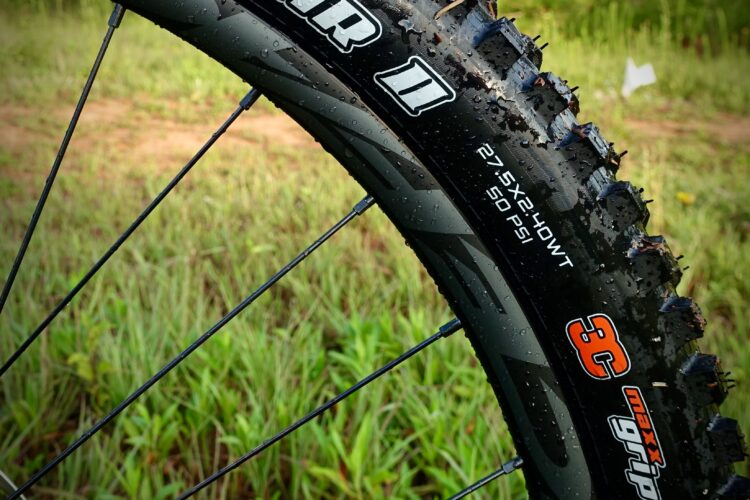 The difference between trail/enduro tires and cross-country tires is a bit more subtle.
The difference between trail/enduro tires and cross-country tires is a bit more subtle.
From there, a good starting point is checking the size of tire that comes stock on your bike, then determining what type of tire and features best match your terrain and riding style. Just because you have a “trail” bike with 140mm of travel doesn’t mean you can’t put a more aggressive “enduro” tire on it if that’s what’ll work best for you…or vice versa.
But what features do you need? For that, let’s look at tire construction…
The simple answer is “rubber.” But it’s a bit more complicated than that. We have a deep dive on tire construction right here, but here’s the quick version:
RUBBER: Every brand has their own unique rubber compounds designed to excel in different ways, and many disclose the durometer (aka “firmness”) of the rubber. Lower durometer numbers (40-60) are softer and have better the grip, but they’ll roll slower and wear out faster.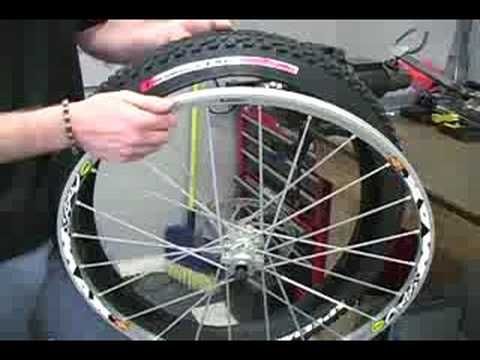 Harder rubber (higher durometer, usually 60-72) provides lower rolling resistance so you can go faster, but won’t grip as well.
Harder rubber (higher durometer, usually 60-72) provides lower rolling resistance so you can go faster, but won’t grip as well.
Higher end tires usually get dual compounds, putting a softer rubber on the side knobs for better cornering, and firmer rubber in the middle for faster rolling and better braking.
CASING: Every tire has a casing that the rubber is applied to. It’s usually a woven nylon fabric. Cheaper tires have lower TPI casings, but most “performance” tires start at 60tpi and this is a great baseline because it’s both flexible and sturdy. More aggressive tires sometimes use two 60tpi casing layers to add more support and cut protection. The tradeoff is they’re less supple and can have a firm-feeling ride, although they’re also better able to handle lower tire pressures without getting squirmy.
Lighter-weight “race” tires can get 120tpi casings, which use thinner fibers to increase the thread count. They are very flexible and help the tire deform to match the terrain, so they feel amazing, but they’re expensive and not nearly as cut resistant.
REINFORCEMENTS: In addition to the casings, some tires add reinforcements to further prevent sidewall cuts, punctures, and pinch flats. Look for a Kevlar or Aramid layer under the tread (puncture protection) or on the sidewall (cut resistance), or both.
An “Apex” layer is a small foam or rubber wedge layered between the casings by the tire’s bead. It adds a bit of sidewall support, but its main purpose is add a cushion between the sidewall and the rim to prevent snakebite punctures when you hit a sharp edge really hard.
All of these technologies work great, but they all add weight and cost. Knobbier, more aggressive tires pedal slowly and can really sap your energy on the climbs and flats. So, only buy as much tire as you really need.
You may notice that some tires in your local bike shop are sold neatly folded up in a cardboard wrap, while others are open to full size.
Cheaper tires use rigid wire beads because they’re easier to manufacturer and cost less. Some downhill tires still use wire beads because weight doesn’t matter as much and they’re a bit less likely to come off the rim, but mostly you’ll want to upgrade to…
Some downhill tires still use wire beads because weight doesn’t matter as much and they’re a bit less likely to come off the rim, but mostly you’ll want to upgrade to…
Folding bead tires use Kevlar beads, which are much lighter. Kevlar won’t stretch, so it’s unlikely to come off the rim (never say never, but it’s basically a non-issue), and these are easier to mount on modern tubeless-ready rims.
Those knobs on the tire—also known as lugs—provide traction. We did a deep dive on MTB tire knobs here, but for a quick reference, here are the basics:
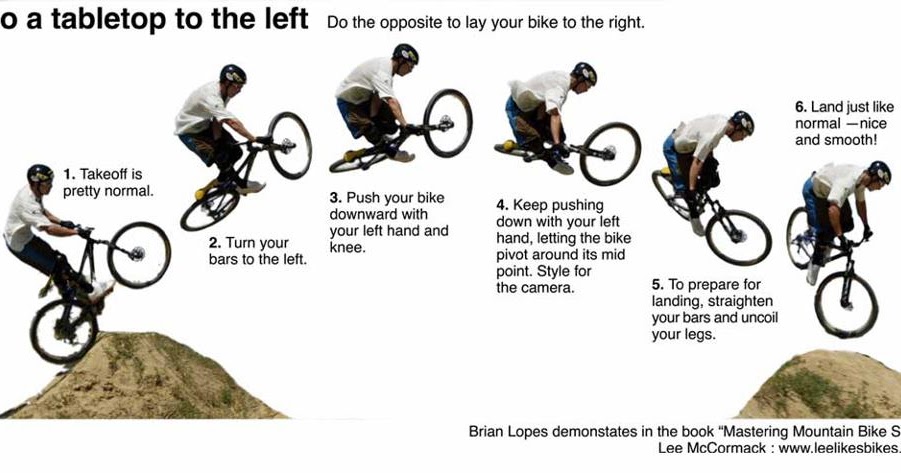
Most lugs are designed to roll in a certain direction, which is usually indicated on the tire. Mount them backward and you’ll end up adding resistance to your ride rather than improving your traction. And some tires, like the Ritchey Trail series above, are front- and rear-wheel specific.

Absolutely! A lot of top pro racers will opt for more traction in the front and a faster-rolling tire in the rear. For example, Canyon MTB Racing’s Emily Batty is a fan of the Schwalbe Racing Ray tire in the front and the Racing Ralph in the rear. The front-wheel-designed Racing Ray in the front offers an aggressive XC tread developed for optimal steering precision with its lug design, while the Racing Ralph in the rear rolls faster. (This combination is also a favorite of Bikerumor staffers.)
A lot of mountain bikes and wheelsets are sold as tubeless-compatible, though many may not come actually set up with tubeless tires. As the name implies, tubeless tires don’t require tubes and instead use tape around the wheel’s inner rim to seal off the spoke holes. Sealant is poured into the tire and the tire is seated, usually using an air compressor or a bike pump with a “booster” chamber in order to add enough air quickly to get the tires to ‘sit’ on the rim of the wheel.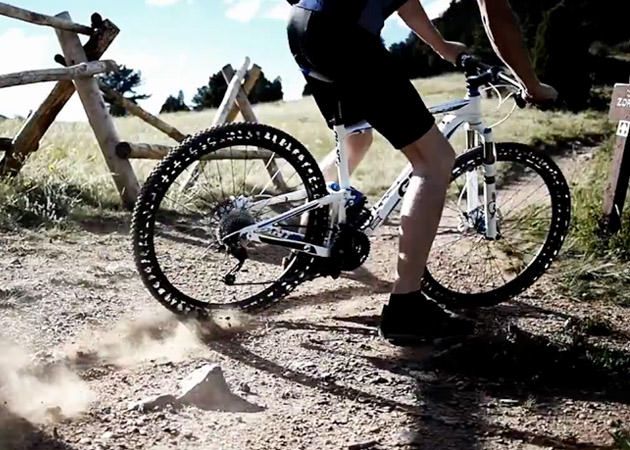
The sealant does exactly what you’d assume it would: Keeps the air sealed into your tire, even if you get a small puncture or you hit an obstacle hard and pinch your tire. This means you can run lower pressures for better comfort and traction, and you save the weight of the tube, too. However, they are harder to deal with if things do go awry and can be messy, so if you’re not much of a mechanic, you may want to stick to regular tubes while you build your skills.
You can attempt to turn any mountain bike tire into a tubeless setup, but we wouldn’t recommend it unless both your tire and rim are labeled as ‘Tubeless Compatible’ or ‘Tubeless Ready’.
Fortunately, almost every modern mountain bike tire (especially ones you’d be upgrading to) are now tubeless-ready. And most modern mountain bike wheels use tubeless-ready rims, all of which are manufactured to meet size and diameter standards to ensure a safe, secure fit. As long as you’re buying a reputable, major brand of wheel/rim and tire, tubeless setup is easy and reliable, and will improve your ride quality.
As long as you’re buying a reputable, major brand of wheel/rim and tire, tubeless setup is easy and reliable, and will improve your ride quality.
In addition to putting tires into the XC, trail or downhill categories, brands often categorize their tires by the conditions that the lugs are optimized for. As you look for a tire, think about the terrain you typically ride, and whether you prefer comfort or speed.

There’s a huge range of pricing when it comes to mountain bike tires. A decent tire can be as inexpensive as $30 per tire, but can easily climb up to over $100 per tire. The sweet spot is right around $50-70/tire when it comes to cost versus value for most riders.
So, which type and brand should you buy? We’re adding MTB cross country, enduro, and downhill tire buyer’s guides, here’s what’s live now:
What questions do you have about MTB tires? Leave ’em in the comments and we’ll answer them!
Feature image © Pirelli
One of the most important elements of a bicycle, the importance of which many riders underestimate when choosing, are tires.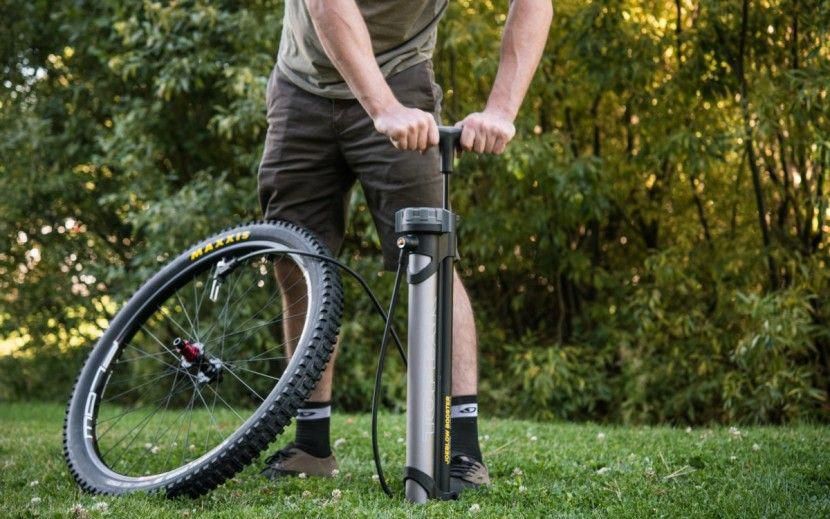 After all, it is they who ensure the safety of movement, good grip and comfort when riding on various surfaces, including snow or ice (if you buy winter tires for a bicycle). The better and better the bike tires are, the safer your ride will be. A good tire will provide you with excellent traction and will last you for years to come. But how to choose high-quality and at the same time inexpensive tires, which tires are suitable specifically for your bike and is it worth chasing well-known manufacturers? And since this topic is of interest to many lovers of two-wheeled vehicles, we decided to find out what is better to “shod” your bike. In this article, we will answer these questions and, in addition, we will tell you what the marking on a bicycle tire means, what they are, types of bicycle tires, their sizes and what materials they are made of. 9Ol000 topic
After all, it is they who ensure the safety of movement, good grip and comfort when riding on various surfaces, including snow or ice (if you buy winter tires for a bicycle). The better and better the bike tires are, the safer your ride will be. A good tire will provide you with excellent traction and will last you for years to come. But how to choose high-quality and at the same time inexpensive tires, which tires are suitable specifically for your bike and is it worth chasing well-known manufacturers? And since this topic is of interest to many lovers of two-wheeled vehicles, we decided to find out what is better to “shod” your bike. In this article, we will answer these questions and, in addition, we will tell you what the marking on a bicycle tire means, what they are, types of bicycle tires, their sizes and what materials they are made of. 9Ol000 topic
Manufacturers offer a huge selection of products under various labels, which is very difficult for an ignorant person to understand. If you need to buy a tire for a bicycle, then two basic requirements must be met - the tire must fit the size of the wheel rim and match the characteristics for the chosen method of movement. The latter is no less important than the tire size for the bike. After all, the wrong type of bike tire can lead to a completely different behavior of the bike when riding. This is important both at the initial stage to ensure safety, quick learning, and at the stage of improving your skills.
If you need to buy a tire for a bicycle, then two basic requirements must be met - the tire must fit the size of the wheel rim and match the characteristics for the chosen method of movement. The latter is no less important than the tire size for the bike. After all, the wrong type of bike tire can lead to a completely different behavior of the bike when riding. This is important both at the initial stage to ensure safety, quick learning, and at the stage of improving your skills.
Each type of tire can be made in different versions, using special technologies and materials. A good tire can be either with or without a tube. They are also fixed in several ways. Sports, road tires are often glued to the rim for durability, as they are not wide and can easily pop out of the metal groove of the wheel or spin in it under heavy loads. Most tires are held by pressure and an increase in their geometric dimensions.
Front and rear tires may differ. If tight contact with the ground is required for steering, then maximum torque efficiency must be ensured at the rear.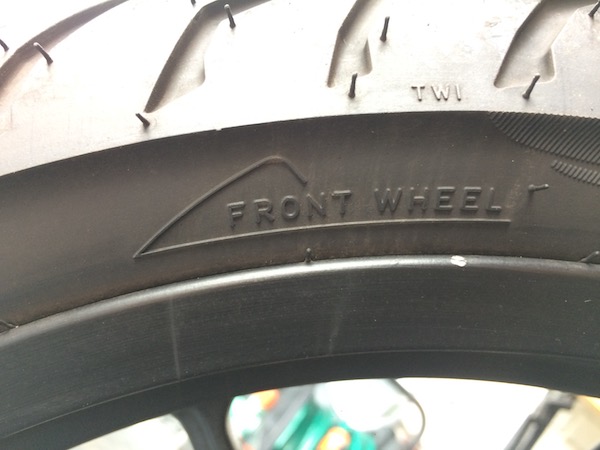 For this reason, the front wheel can have a smooth middle with aggressive studs on the sides, the rear wheel can have the optimal size of the studs to hold the bike, and with the help of a tread with directional notches, ensure its fast acceleration and movement.
For this reason, the front wheel can have a smooth middle with aggressive studs on the sides, the rear wheel can have the optimal size of the studs to hold the bike, and with the help of a tread with directional notches, ensure its fast acceleration and movement.
Products are divided into the following types:
Translated from English, the term means "smooth". The tire either has no tread at all, or it has a small height. The tires provide maximum contact on smooth, even road surfaces and are light in weight. Designed for movement on prepared tracks and are mainly installed on road bikes. Allow to develop the maximum speed on a plain smooth surface. You can’t use them for off-road walking, for performing complex freestyle elements, tricks. Such tires, due to the absence of a tread, have minimal rolling friction resistance, which greatly facilitates pedaling. Buying slick bike tires is only worth it if your route is 100% clean pavement. Any off-road trip is fraught not only with poor handling, but also with increased chances of breaking a wheel due to a smaller contact patch, and, accordingly, increased pressure on the tire.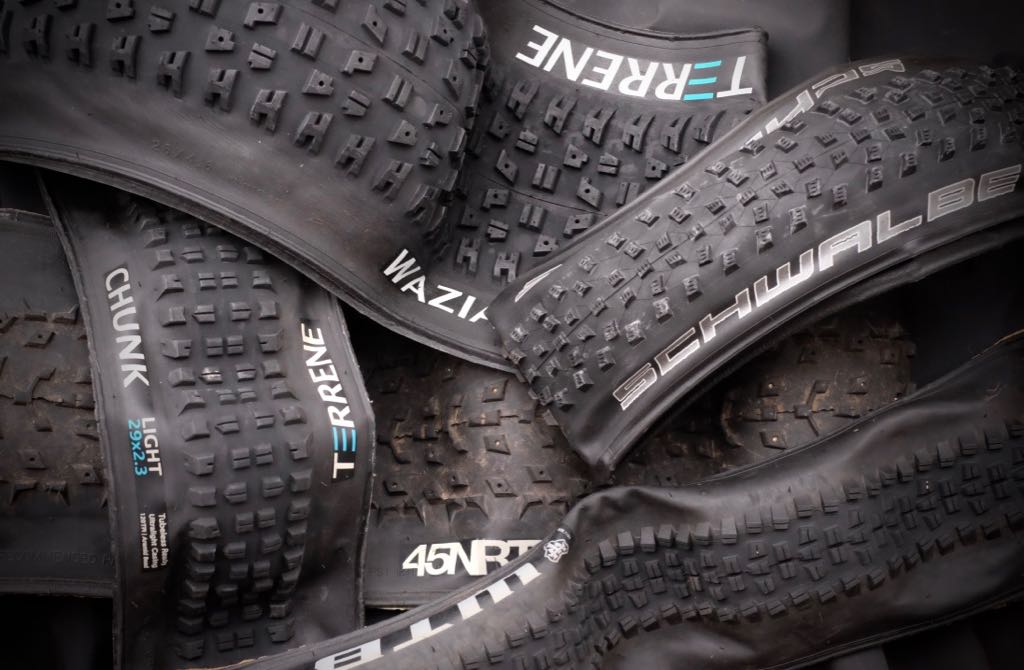
The middle part of the tire has a slightly pronounced tread with water-repellent grooves, and the sides are equipped with lugs that help with turns, provide reliable contact with uneven, bumpy surfaces. The products belong to the category of universal tires, suitable for both driving on asphalt roads and when driving on natural ground. When selling a bicycle, it is often equipped with just such tires. So if your route is both tarmac and light off-road, semi-slick bike tires are the best choice for you.
The species is divided into several categories according to the shape and size of the tread. Tire with small spikes is suitable for trips on equipped dirt roads. Off-road driving involves the installation of products with a powerful, aggressive tread. A special version of tires is offered for movement on sand, snow. But it is worth noting that bicycle tires with a large tread are completely unsuitable for city driving.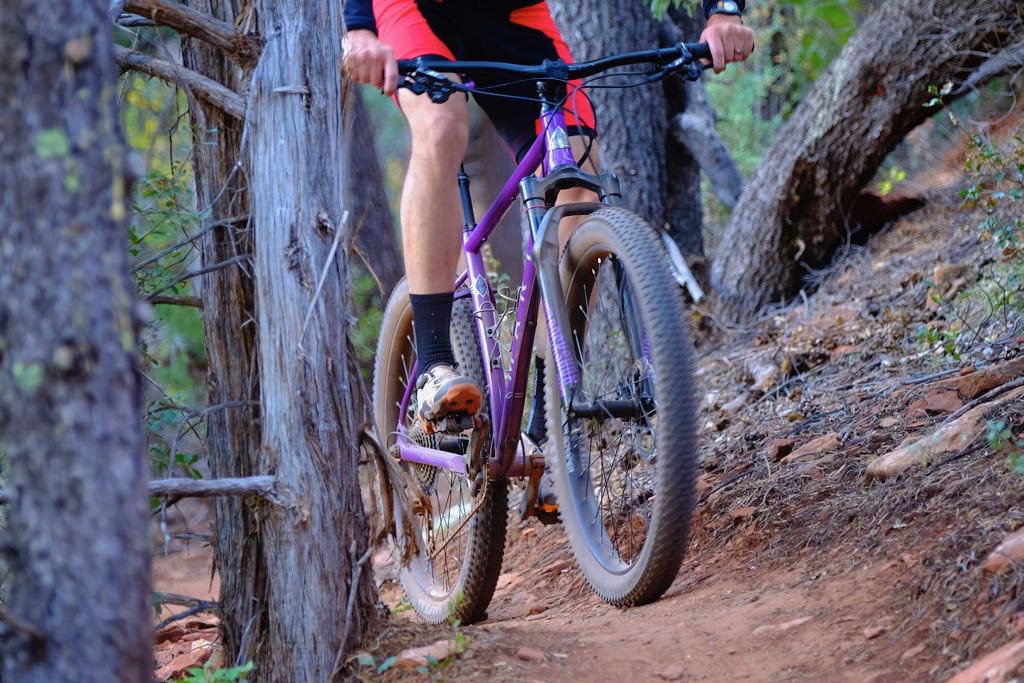 They are heavier than semi-slick ones, and due to the high tread they will create additional resistance when driving.
They are heavier than semi-slick ones, and due to the high tread they will create additional resistance when driving.
Just like for cars, there are also winter tires for bicycles. They are very soft with an aggressive tread, and metal spikes are often installed in them for driving on ice. Because of their features, they show themselves perfectly in winter, but in summer they will become unusable very quickly. Therefore, for the winter and summer seasons, you will definitely have to buy two different sets of tires.
According to the installation method tires can be clincher, tubular and tubeless.
Clincher is any tire with a bead that secures it to the rim. This type of bicycle tires can be installed both on classic, with smooth sidewalls, and on rims with special hooks-locks, while the lock on the rim and the counterpart on the tire must match. There are also single-tube clincher bike tires that have a special protrusion for fixing on the rim.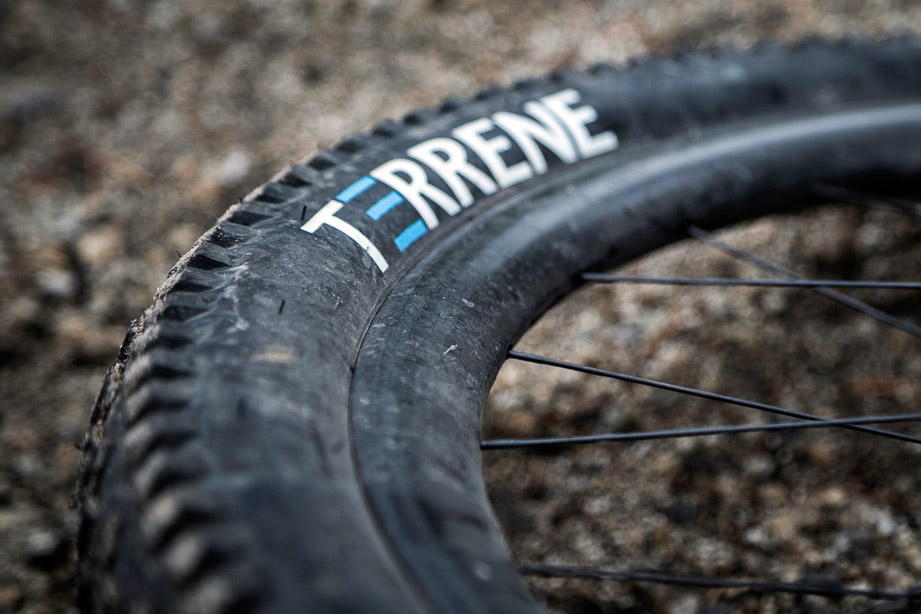
Expensive road bikes fitted with tubular tires which are glued to the rim. Very light and durable. The latter is ensured by the high filling density of cord threads (up to 320 TPI), which also significantly reduces the risk of puncture.
tubeless tires for bicycles are also popular, but before choosing and installing them on a specific bike model, you should consult with a specialist. This is due to the fact that a special rim with a high side is needed for installation. It is not recommended to purchase them for standard wheels. The sides of this type of tire are glued for additional sealing. Although they are quite practical in operation, they have a slightly lower weight compared to conventional ones, plus they can be repaired without removing them from the rim. Also, high-quality tubeless bicycle tires are quite resistant to punctures.
Tubeless tires filled with flexible plastic foam are mainly used in the production of tires for recreational and children's bicycles.
You can find different colored tires for bicycles on the market, but this variety does not affect the quality and technical characteristics. A design solution supported by technological capabilities, nothing more. But if you have a desire to emphasize your individuality, stand out from the rest of the cyclists, or you do not like the standard black color of your tires, then choosing colored bicycle tires is your option.
The evolution of production has taken place in the last 20-30 years. Not so long ago, there was no such choice of products of this class in stores. Today it has become technologically possible to produce tires for special purposes, optimally meeting the tasks. Despite some features, the basic elements of tires are as follows:
Natural or artificial rubber, as well as composite materials, can be used as an elastic base in the manufacture of tires.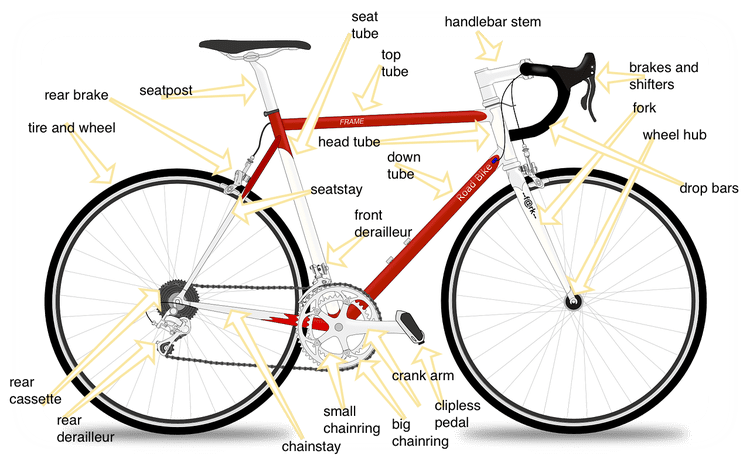 Natural raw materials are more durable, but production difficulties and natural volume limitations make the cost of production significantly higher. Synthetic materials are cheaper. Progress in bicycle tire production technologies allows some artificial materials to come close to the quality indicators of natural rubber, and even win in some positions.
Natural raw materials are more durable, but production difficulties and natural volume limitations make the cost of production significantly higher. Synthetic materials are cheaper. Progress in bicycle tire production technologies allows some artificial materials to come close to the quality indicators of natural rubber, and even win in some positions.
The elasticity of the rubber or compound is of great importance. For wide touring and winter tires, which are mainly used on mountain bikes, manufacturers use soft compounds. Elastic tires ensure good contact between the wheel and the road surface. Tires for high-speed road bikes are made from denser, stiffer materials. They have a smaller width, more pressure and a correspondingly smaller contact area, which gives less resistance when driving. Therefore, sports tires are made light, durable, tough. They are ideal for racing, but uncomfortable and unsafe for walking routes on unprepared trails.
As for the “skeleton” of a bicycle tire, it can be made of synthetic, Kevlar or steel threads (which has recently become rare). Steel cord tires are the cheapest and heaviest of all. Mainly used on old type bicycle tires. The disadvantages also include the likelihood of a puncture of the chamber in case of cord wear (thin metal threads begin to climb out of the tire carcass and pierce the chamber). Synthetic cord is the golden mean between steel and Kevlar. Lightweight, and with an adequate price tag, but less durable than Kevlar. Tires with Kevlar threads, unlike synthetic ones, have much greater strength, so the best brands of tires are made using them. The only drawback of the material is its cost. These tires pay off with durability, light weight, strength, ease of storage and transportation. Kevlar is used both as a cord in the body of the product and as a safety cable. It is quite difficult to decide which tire is better, with a Kevlar cord or a synthetic one. If the budget allows or you plan to take part in cycling, then most likely you should take Kevlar, and for ordinary rides, a synthetic thread will do.
Steel cord tires are the cheapest and heaviest of all. Mainly used on old type bicycle tires. The disadvantages also include the likelihood of a puncture of the chamber in case of cord wear (thin metal threads begin to climb out of the tire carcass and pierce the chamber). Synthetic cord is the golden mean between steel and Kevlar. Lightweight, and with an adequate price tag, but less durable than Kevlar. Tires with Kevlar threads, unlike synthetic ones, have much greater strength, so the best brands of tires are made using them. The only drawback of the material is its cost. These tires pay off with durability, light weight, strength, ease of storage and transportation. Kevlar is used both as a cord in the body of the product and as a safety cable. It is quite difficult to decide which tire is better, with a Kevlar cord or a synthetic one. If the budget allows or you plan to take part in cycling, then most likely you should take Kevlar, and for ordinary rides, a synthetic thread will do.
When choosing a tire, pay special attention to the markings. A single international standard approved by the European technical organization for tires and rims ETRO. It is designated by the abbreviation ISO and has two numbers, the first of which indicates the tire width, and the second is the rim diameter. Most often, the manufacturer puts the designation on the side of the tire. However, often you will not see standard markings there. The size is indicated in inches and their fractions, and does not always correspond to the actual dimensions of the product. In this case, it is necessary to show the product to the seller when buying, or in extreme cases, rewrite the alphanumeric value.
4 types of rims are considered standard: 406 mm, 507 mm, 559 mm and 622 mm, although there are actually many more.
However, there are 6 types of tires. The discrepancies are caused by the method of measurement. Tires are measured by outside diameter.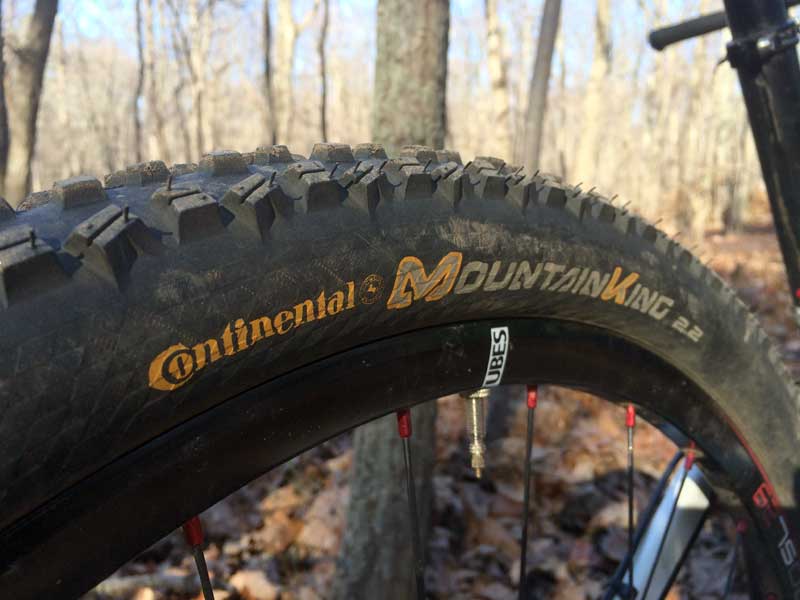 They come in 20 (used mainly for children's or BMX bikes), 24, 26, 27.5, 28 and 29 inches. In other words, this is an analogue of the profile indicator when designating automobile tires. The intended purpose involves different dimensions of products with the same seat. So road bikes are characterized by low-profile tires. Cross-country driving will be safer and more efficient with large, low-pressure tires. Traditional designations 27.5, 28, 29inches are for 622mm ISO rim.
They come in 20 (used mainly for children's or BMX bikes), 24, 26, 27.5, 28 and 29 inches. In other words, this is an analogue of the profile indicator when designating automobile tires. The intended purpose involves different dimensions of products with the same seat. So road bikes are characterized by low-profile tires. Cross-country driving will be safer and more efficient with large, low-pressure tires. Traditional designations 27.5, 28, 29inches are for 622mm ISO rim.
The second defining value is the tire width. Some sports models for traditional disciplines have a value of less than 2 cm. Mountain bikes, tourist bikes can be equipped with tires more than 5 cm wide. Well, fat bikes have the widest tires. Often, tire width is also given in inches as a diameter (for example, 26×2.1, where the first number is the diameter and the second is the width). When buying, you should pay attention to the trade article on the sidewall. On it, you can get more complete information on the manufacturer's website or in the documents for the goods from the seller. For example, the softness of rubber, composition and some other characteristics are not always indicated on the product itself. They can be important for solving specific problems, or for buying tires that are optimal for starting classes and teaching those who want to master the skill of cycling. They need a softer and more elastic tire. Which brand will be specifically chosen is not so important.
For example, the softness of rubber, composition and some other characteristics are not always indicated on the product itself. They can be important for solving specific problems, or for buying tires that are optimal for starting classes and teaching those who want to master the skill of cycling. They need a softer and more elastic tire. Which brand will be specifically chosen is not so important.
Well, the third parameter is the maximum pressure for which the tire is designed.
It should be noted that almost all models of bicycle tires have an indication of the direction of rotation of the wheel. They must be placed in the direction of the arrow, which is usually applied to the side surface of the case.
With a huge selection of products on the market, there are undoubted leaders among manufacturers whose products are in the lead in terms of sales. These include the following brands:
 German company known for products for bicycles, motorcycles and wheelchairs. The activity has been carried out since 1922. Sales leader. It is famous for producing reliable, durable tires. Own scientific and technical base in Cologne (Germany) allows us to implement unique developments. Direct production has been moved to Indonesia and Vietnam. Many of the leading bike manufacturers stock these tires in their base models;
German company known for products for bicycles, motorcycles and wheelchairs. The activity has been carried out since 1922. Sales leader. It is famous for producing reliable, durable tires. Own scientific and technical base in Cologne (Germany) allows us to implement unique developments. Direct production has been moved to Indonesia and Vietnam. Many of the leading bike manufacturers stock these tires in their base models;  Quality rubber manufacturer in Taiwan. The range is not large, but the presented models are reliable, durable. Inexpensive, but very good rubber;
Quality rubber manufacturer in Taiwan. The range is not large, but the presented models are reliable, durable. Inexpensive, but very good rubber; In addition to the listed companies, you can see dozens of other brands, with varying degrees of popularity and product quality.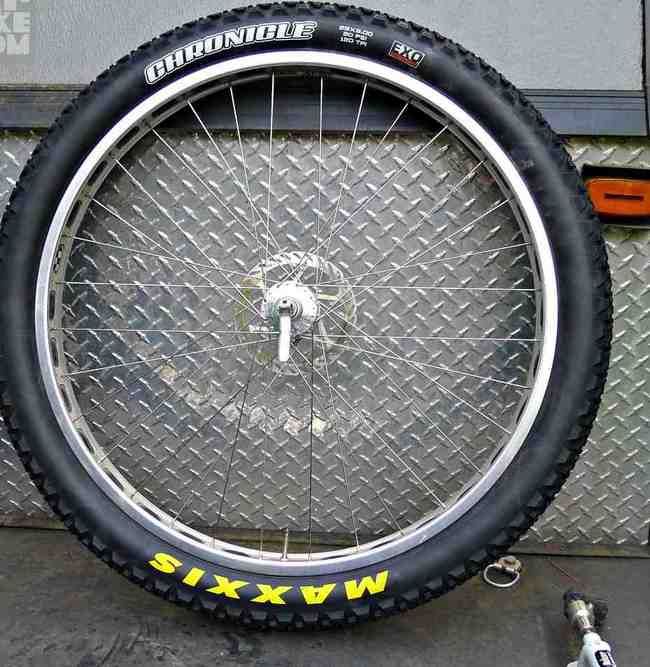 Some of them are well worth buying. You don't have to pay for a big name.
Some of them are well worth buying. You don't have to pay for a big name.
Before buying tires, you need to decide on your goals. This is influenced by the level of training, and the place to ride, and even the model of the bike. Taking expensive, professional tires is not always wise. Their operation implies good training of the athlete and high-quality special equipment. For a beginner on a regular bike, semi-slicks with a width of 35-40 mm are perfect. The versatility of the product will allow you to quickly master the basic techniques of controlling a bicycle. Good grip on any surface will make it possible to ride on the roads, in parks, on special sites.
Professional athletes do not need advice. Years of experience and knowledge allow them to determine exactly what they need. But amateurs should not be guided by their choice. What is good for a specialist may be unacceptable for an amateur. For example, single-tube tires used for road racing are difficult to install and require skill and experience to realize their potential.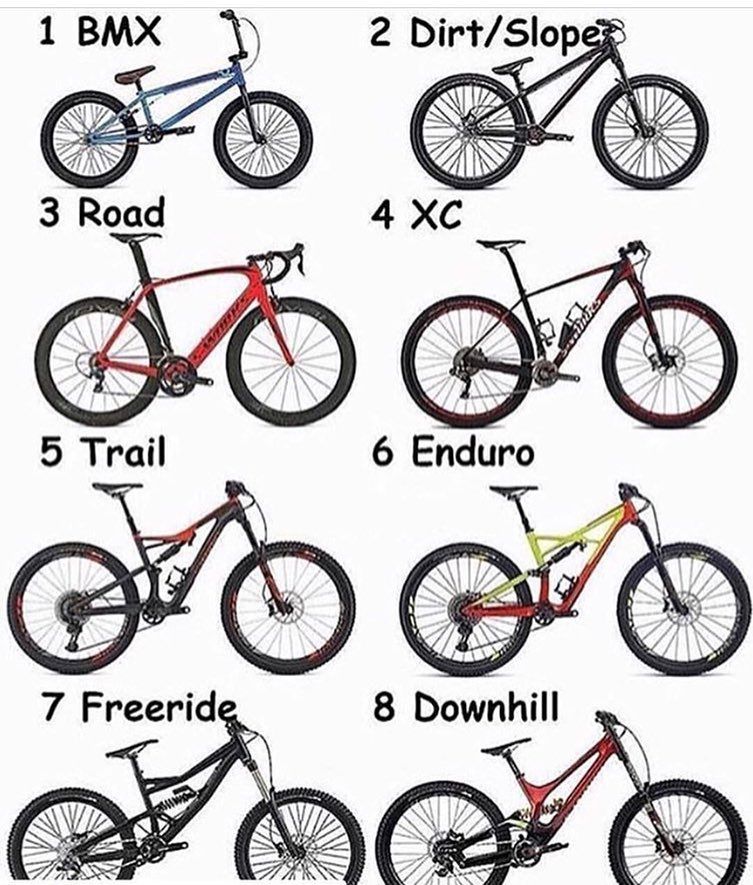 This is achieved through many years of practice.
This is achieved through many years of practice.
If a tourist trip is planned on difficult, rocky ground, or in a forest area where you can run into unexpected obstacles, tree roots, then preference should be given to wide studded tires with a high profile. Buying a super-dense, professional-quality cross-country tire is not a good idea for a beginner. It is practically not prone to punctures, has excellent tenacity, but is absolutely uncomfortable for walking.
When you want to continue training in the winter, you need to purchase tires with a specialized tread. They are produced in two types: with and without metal spikes. In the second case, grip is provided by the shape of the tread and the special properties of rubber. Winter tires are more expensive than conventional tires. Depending on the region, the period of operation can be from 2-3 months to six months. Then I follow again to change tires for summer. Each user decides whether it makes sense to do this. Sometimes it’s not the price that scares away athletes, but not the comfort and insecurity of training during the frosty period.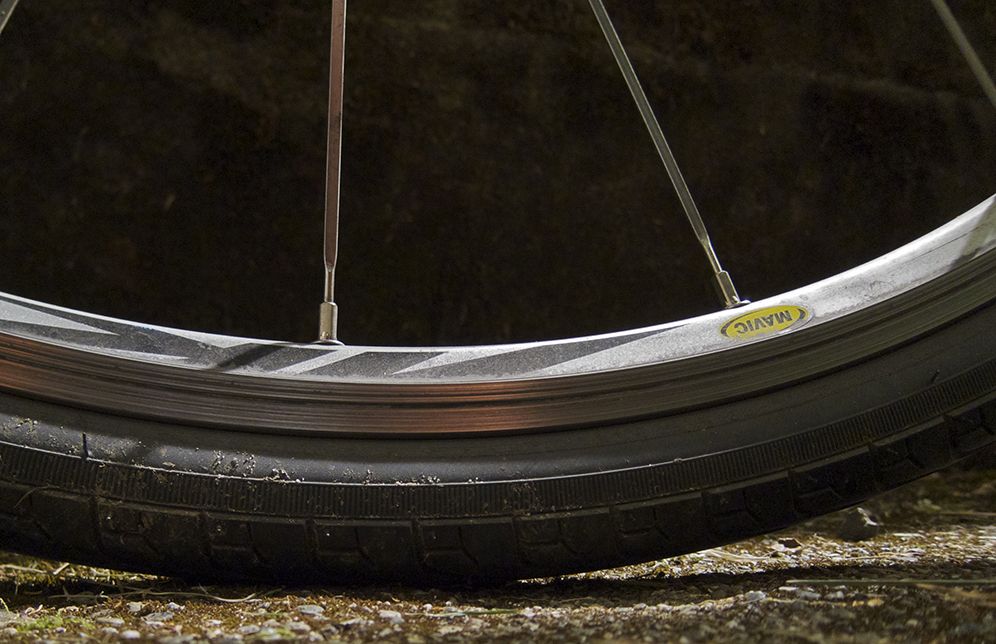
The price category is quite large, but the cost is not the main indicator of the quality required at this stage. It makes no sense to overpay for a brand or buy products with special qualities that cannot be used. Today, specialized salons have a manager or consultant on staff who can be consulted before purchasing a product. You can take the advice of experienced users from among friends. The best option would be testing. If it is possible to try different types of tires, this will make it possible to determine the desired quality, relying on the individual capabilities and preferences of the potential buyer.
One more nuance should be taken into account by residents of cities where it is supposed to move. The excellent technical characteristics of natural rubber can be reduced to zero with prolonged exposure to petrochemicals, road chemicals. Artificial rubber and composite are resistant to these aggressive environments, and tires made from these materials can last a very long time without loss of quality.
If you buy a tire for a bicycle offline, in a bike shop, then be sure to check the quality of the rubber, especially if it is from an unknown manufacturer. To do this, you can press hard and run your finger along the sidewall of the bike tire. If the tire is of high quality, then the finger will remain clean, without black marks. You can also check the elasticity of a bicycle tire. To do this, pull on the remaining hair after casting. It should stretch a little. Well, in general, inspect the tire visually for casting defects.
Anti-puncture tape for bicycle tires can often be found for sale on Aliexpress or in online stores. This is a strip of elastic, hard rubber that is inserted between the tire and the bicycle tube. After reading the reviews on this product, we can conclude that its purchase is not advisable. Not only does the anti-puncture layer increase the weight of the bike, but it can also damage the camera if it jams the latter. The use of good, high-quality tires with a non-worn tread is already pretty good protection against punctures, and on long trips we still recommend that you carry a spare tube and patches with you.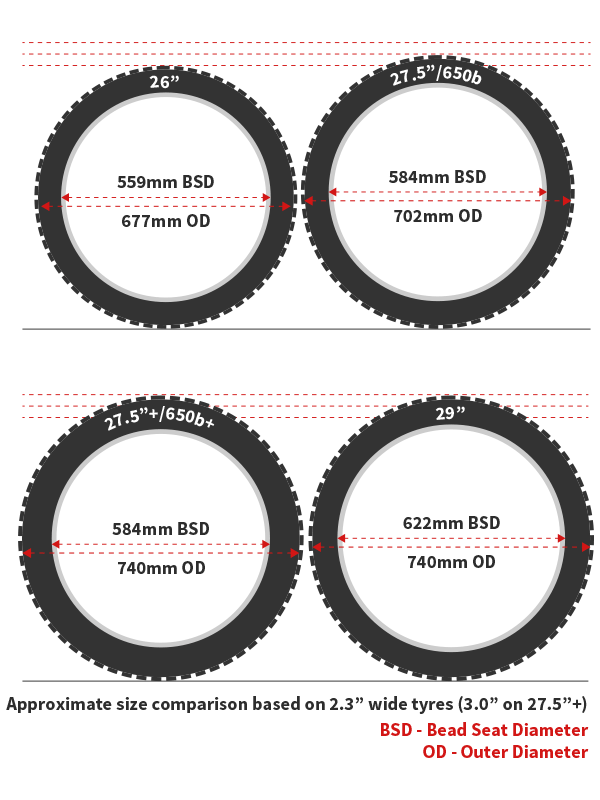 Therefore, the purchase of an anti-puncture layer, in principle, is not needed. Well, it's up to you to decide.
Therefore, the purchase of an anti-puncture layer, in principle, is not needed. Well, it's up to you to decide.
Below we have added a couple of videos on how to choose bicycle tires and decide on their size.
What can be summed up. First, if you decide to buy a tire for your bike, then you should consider the size of your rim, the terrain where you will be riding and the style of riding. For the city, it is better to choose slicks (if you have a road bike) or semi-slick tires (if you occasionally go to the dirt road), but for off-road, mud tires for MTB will show themselves best. You should also decide on the width of the tire, the wider it is, the better the grip and control, but the harder it is to pedal. For ordinary bike rides, it makes no sense to take expensive tires made of natural rubber and Kevlar cord (but you should not take a metal cord either). The best option would be an artificial compound with synthetic threads. Well, choose tires for a bicycle from well-known manufacturers who have proven themselves to be of high quality. Last but not least, if you're not sure which tire is right for your bike, feel free to ask a sales consultant. After all, it is better to buy what you need right away than to return the goods back to the store.
For ordinary bike rides, it makes no sense to take expensive tires made of natural rubber and Kevlar cord (but you should not take a metal cord either). The best option would be an artificial compound with synthetic threads. Well, choose tires for a bicycle from well-known manufacturers who have proven themselves to be of high quality. Last but not least, if you're not sure which tire is right for your bike, feel free to ask a sales consultant. After all, it is better to buy what you need right away than to return the goods back to the store.
Spring has begun, and summer is just around the corner, so going out into nature is sacred! In addition, we have already written how to choose a mountain bike that will meet the parameters of your physique. And now it's time to put on your iron horse, which we will teach you how to do in just 5 easy steps;)
Step 1. Diameter
The actual tire size is determined using the number on the tire sidewall:
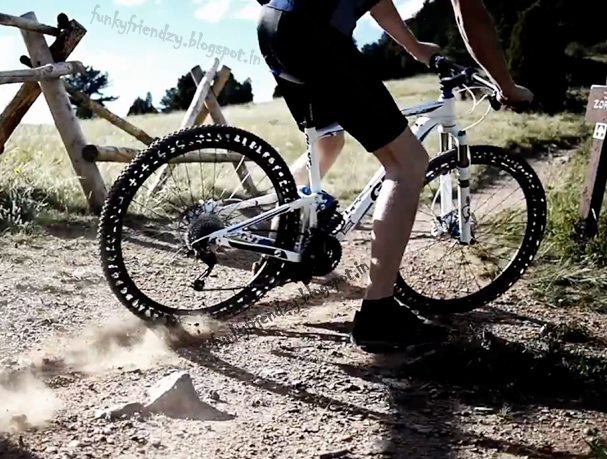
Note: new tires must be the same diameter, but you can choose a different width (more on that later). Also, the tire width should be chosen according to the brand and model of the rim.
Step 2: With or without tube
Find out which tire system you usually use.
Tubeless tires are worth installing for three reasons:
Optional:
Tubeless tire is marked on the side with the word "tubeless", you can see it in the photo above.
The sidewall indicates the parameters of the tubeless type of tire.
If you are not sure whether your tires are chambered or not, determine this according to the make and model. Also standard tube tires are usually much cheaper than tubeless tires, and it is also very rare to find size 26 tubeless tires these days.
Step 3. Type / Riding Style
Determine your type of riding:
Note:
If you combine riding styles, make your choice based on the most extreme style. The more aggressive the conditions, the more likely you are to need a tire that will meet those conditions.
Step 4. Area
What type of terrain do you drive? Just in case: do not choose tires "like anyone else" - whose choice may not suit you:
If the terrain combines several types, tires must match each of them.
Pitch 5. Width
How does tire width affect driving? The thicker the tire, the more energy is expended to pick up speed and overcome frictional resistance with the road surface. We published a whole study of scientists about this, which proves that the width, composition and tread have a strong influence on energy consumption.
We published a whole study of scientists about this, which proves that the width, composition and tread have a strong influence on energy consumption.
So review your previous answers and compare them with narrow/medium/wide tire options.
Note!
Please note that it is not necessary to have the same width, or even the same tread front and back. Some cyclists opt for a wide cover on the front wheel for increased control when cornering and a thin cover on the rear wheel for rollover storage.
Different width tire ratings:
1. Narrow tire (1.8 - 2.1):
2. Medium width tire (about 2.2 - 2.5):
